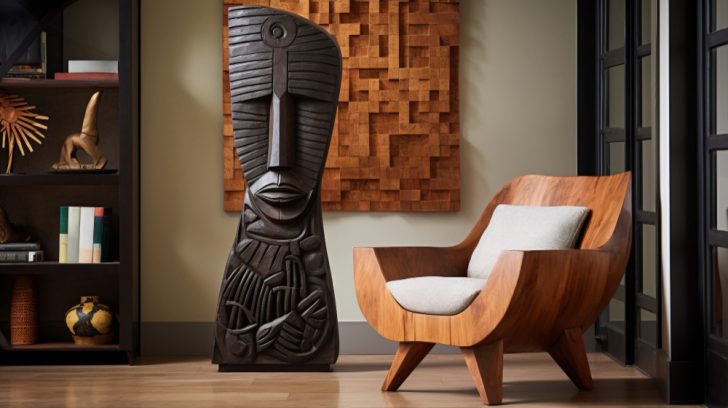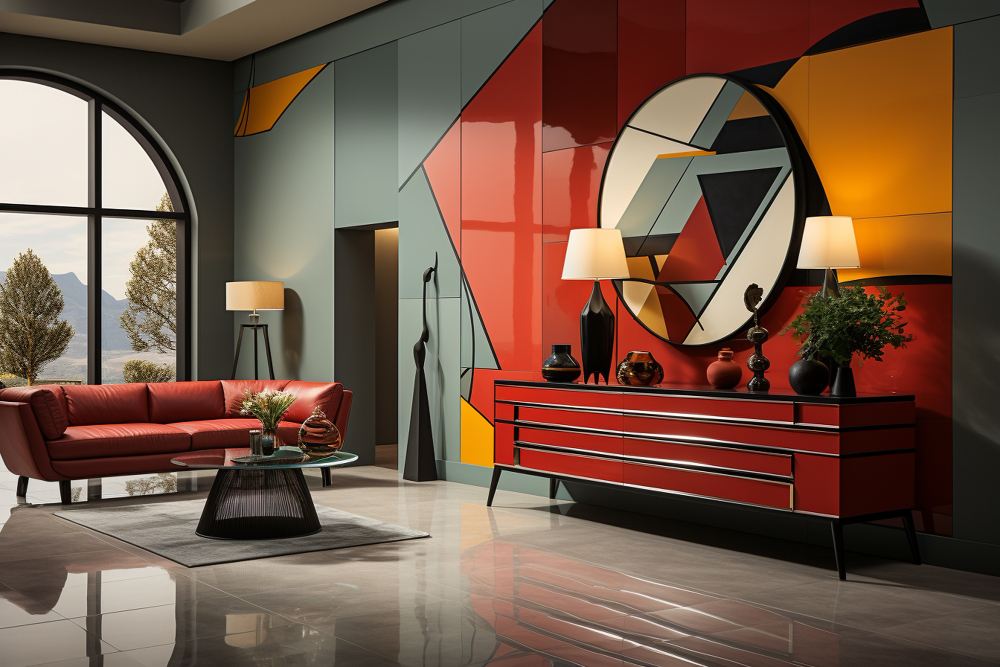With its revolutionary approach to modern aesthetics, Bauhaus interior design has left a lasting impact on both industrial and interior design. Originating from a short-lived German art school, this style has transcended time and geography to influence our living spaces today. In this comprehensive guide, we'll explore the history of the Bauhaus, its hallmark characteristics, and how you can incorporate this timeless style into your own home.
What Is Bauhaus Interior Design?
Bauhaus interior design springs from the iconic German art school, the Bauhaus, which operated from 1919 to 1933. Despite its brief existence, the school's philosophy and aesthetics have profoundly influenced art and design. The Bauhaus style is characterized by a functional approach, often featuring industrial materials like tubular steel and a stark rejection of unnecessary ornamentation—a stark contrast to the more decorative Arts and Crafts movement of the time.

Ben Benjamin | Unsplash | Bauhaus interior design springs from the iconic German art school, the Bauhaus, which operated from 1919 to 1933.
Ellen Lupton, a curator at Cooper Hewitt and professor at the Maryland Institute College of Art, describes the Bauhaus as a "myth" that has been continually rediscovered and reinterpreted over the decades. According to Lupton, the school's legacy was perpetuated through strategic publishing, exhibitions, and teaching stints by former members in the United States long after the original school had closed its doors.
The Origins of Bauhaus Style
The Bauhaus was founded by architect Walter Gropius in Weimar, Germany, in 1919. Breaking traditional barriers between craftspeople and artists, the school placed all students in unified workshops, fostering an environment where art and craftsmanship intersected freely. This radical pedagogy laid the groundwork for what would become a hallmark of modern industrial design.
As the Nazis rose to power, the school was closed in 1933, prompting many of its practitioners to flee Germany. This diaspora helped spread the Bauhaus principles globally, influencing mid-century modern design across the United States and beyond.
Defining Elements and Characteristics of Bauhaus Design
Bauhaus design is easily identifiable by its:
- Geometric shapes
- Clean lines
- Emphasis on industrial production
- Functionality first approach
- Use of primary colors
- Overall rationality in design

Wirestock | Freepik | Bauhaus interior design continues to influence modern interiors by promoting a blend of art, craftsmanship, and functionality.
Examples of Iconic Bauhaus Design
- Marcel Breuer’s Wassily Chair: This piece epitomizes the Bauhaus ethos. Designed in 1925, it features a minimal frame of bent tubular steel and leather inspired by bicycles' lightweight and durable design.
- Ludwig Mies van der Rohe’s Barcelona Chair: First designed for a modernist apartment in New York, this chair combines the industrial simplicity of tubular steel with the luxury of leather, showcasing the Bauhaus blend of art and functionality.
- Josef Albers' Nesting Tables: Created in 1926, these tables are celebrated for their straightforward, color-blocked design, continuing to be a staple in modern interiors.
- Marianne Brandt’s Teapot: An iconic example of Bauhaus metalwork, Brandt’s teapot is revered for its simple, geometric form and functional elegance.
How to Achieve the Bauhaus Aesthetic in Your Home
Incorporating Bauhaus interior design into your home doesn't require an all-or-nothing approach. Start by selecting pieces that embody the Bauhaus principles of functionality and simplicity. Iconic pieces like the Wassily chair or Barcelona chair can be focal points in any room. For those on a budget, consider more accessible replicas or pieces inspired by the Bauhaus aesthetic.
Additionally, emphasize materials like steel and glass and ensure every item in your space serves a purpose, keeping ornamentation to a minimum. This honors the Bauhaus ethos and creates a clean, modern look in your home.

Image by Freepik | Incorporating Bauhaus interior design into your home doesn't require an all-or-nothing approach.
Conclusion
Bauhaus interior design continues to influence modern interiors by promoting a blend of art, craftsmanship, and functionality. Whether through authentic pieces or inspired designs, embracing this style can bring a sense of historical sophistication and contemporary simplicity to your living space. Dive into the world of Bauhaus and let its principles transform your home into a masterpiece of design efficiency and aesthetic clarity.












